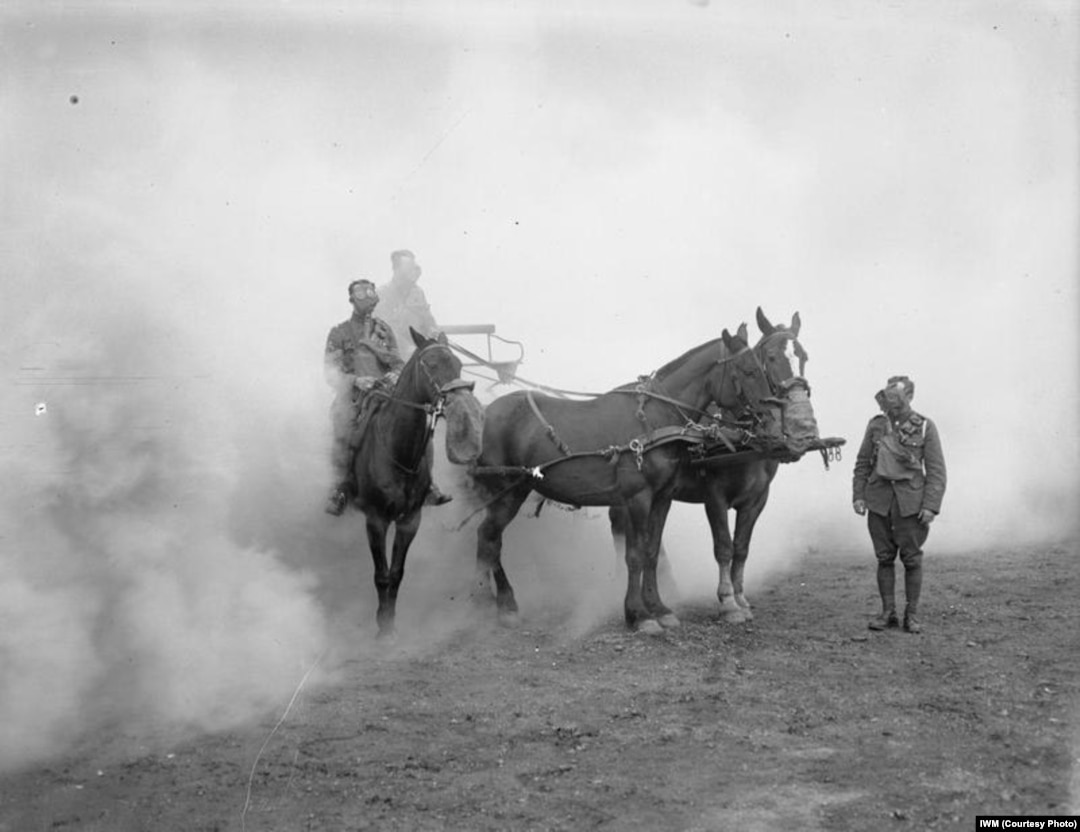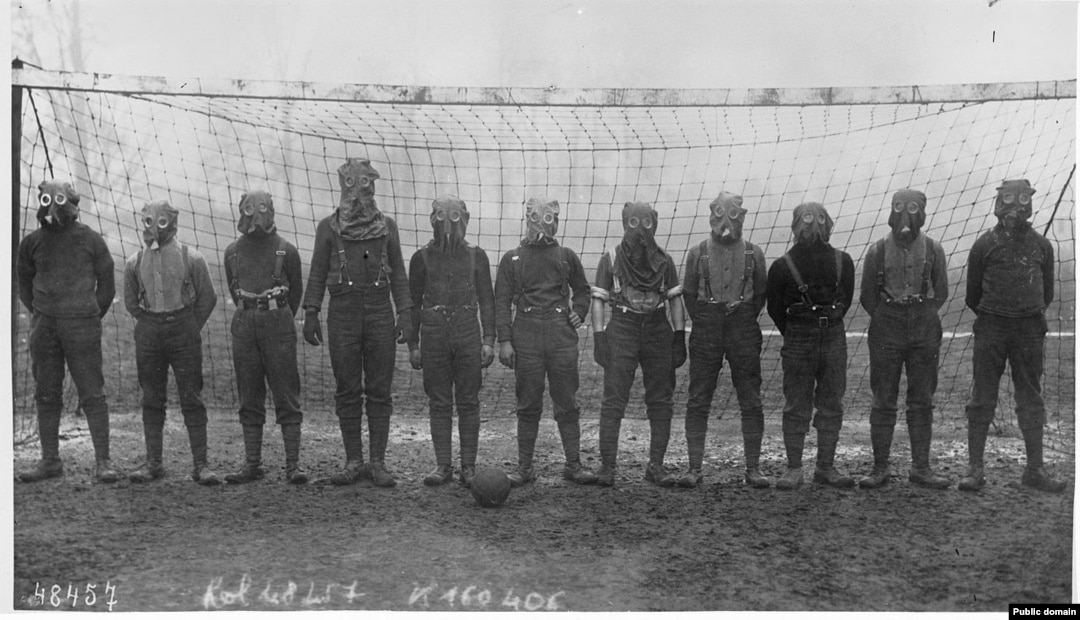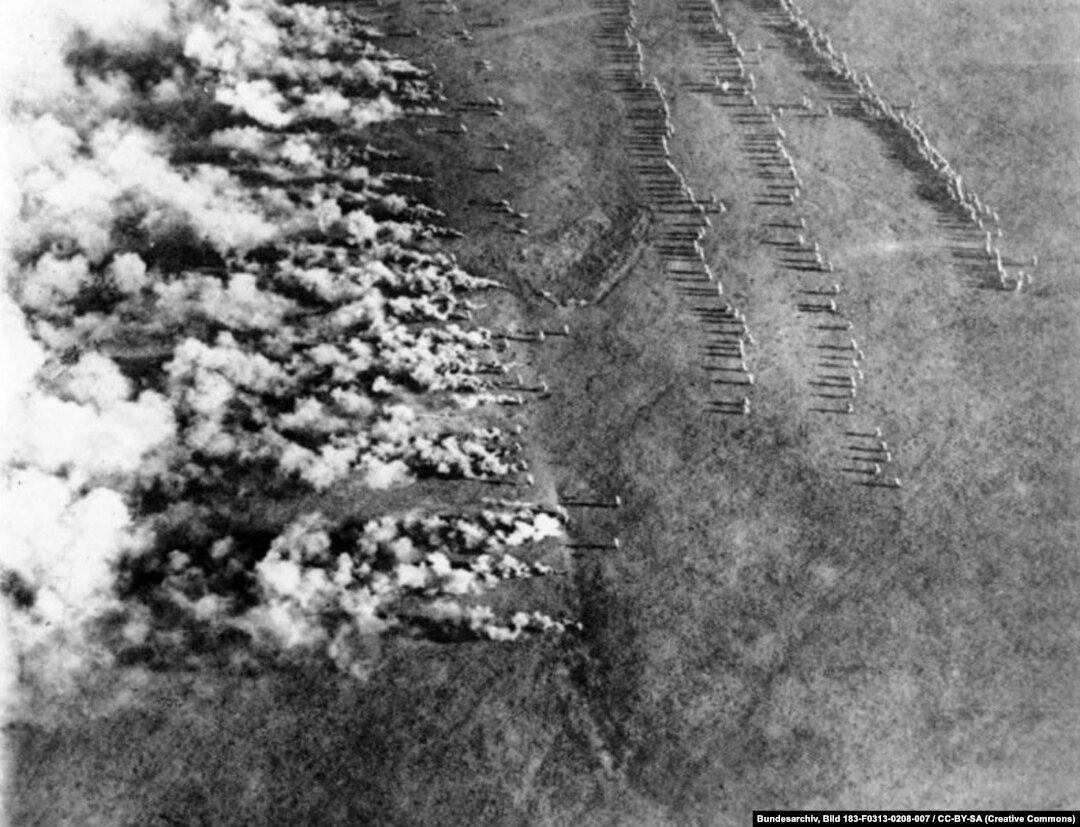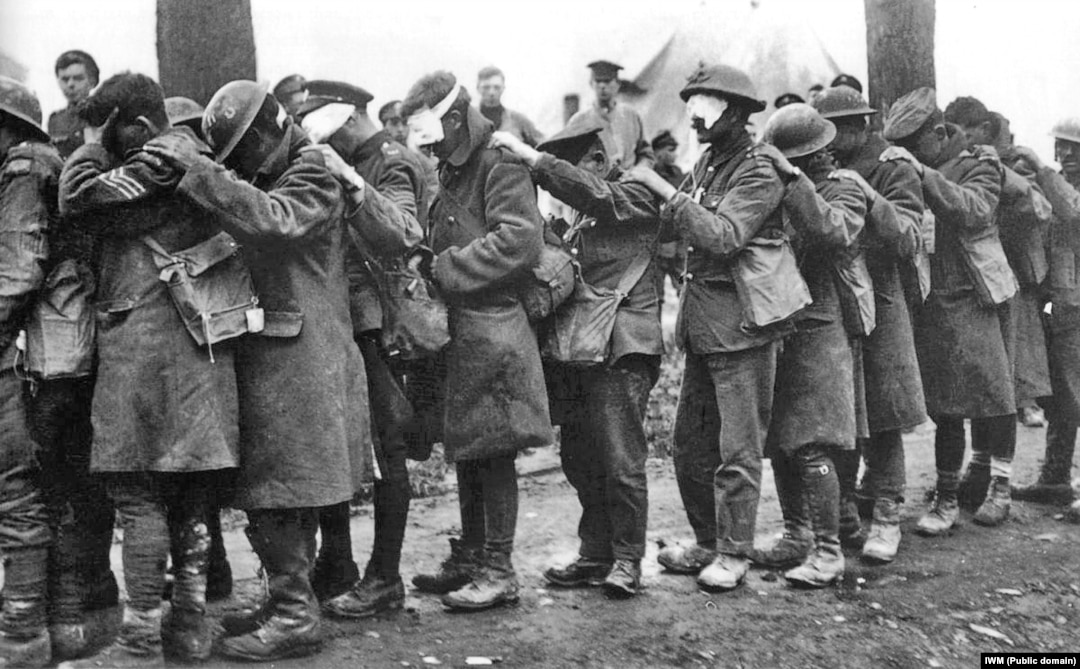The Devastating Effects Of Chemical Weapons, Agents

A World War I chemical drill included men and horses from Britain's Army Service Corps in the United Kingdom.

A soccer team of British soldiers dons gas masks during World War I in northern France in 1916.

A World War I German gas attack on the Eastern Front photographed by a Russian airman. The 1916 image was titled "German Frightfulness from the Air."

British 55th Division troops blinded by tear gas await treatment at an Advanced Dressing Station near Bethune, France during the Battle of Estaires on April 10, 1918, as part of the German offensive in Flanders.
Nine-year old Phan Thi Kim Phuc (center) with other Vietnamese children after being severely burned by napalm on June 8, 1972, after a South Vietnamese plane erroneously dropped napalm on South Vietnamese troops and civilians. Kim Phuc became a symbol of civilian suffering during the war.
A picture from a 2004 exhibit in Halabja, Iraq, about the 1988 chemical-gas attack in that town by the regime of Iraqi dictator Saddam Hussein that killed some 5,000 Kurds.
Kurds killed during an Iraqi chemical-weapons attack in the northeastern Iraqi city of Halabja on March 16, 1988. (official Iranian news agency IRNA)
Two Kurdish children killed by an Iraqi chemical weapons attack on the Iraqi city of Halabja on March 16, 1988. (IRNA)
A 2-year-old girl with an enlarged head who was born to a couple exposed to Agent Orange is cared for at the Agent Orange Victims Service in a hospital in Ho Chi Minh City in 1998.
Members of a UN chemical weapons team readies some 1,000 liters of mustard gas for a controlled explosion on November 24, 1992, in Al-Muthanna, Iraq. (Iraqi television)
A Chinese chemical-weapons disposal team excavates chemical bombs from a site near a school in the northeastern Chinese city of Mudanjiang in 2006. Japananese soldiers left hundreds of thousands of mustard-gas bombs and other such weapons in China at the end of World War II. It is considered the world's largest stockpile of abandoned chemical weapons.
Children wrapped in sheets are laid for burial in Syria. Syrian rebels say they were killed in a toxic-gas attack by government forces on the outskirts of Damascus on August 21, 2013. (AFP/HO/Shaam News Network)

